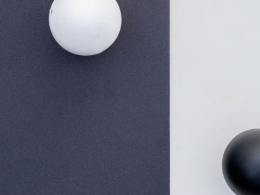by Jeffrey Saut, Chief Investment Strategist, Raymond James
“In 1965 Steve McQueen starred in The Cincinnati Kid, the classic poker movie of all time. This movie has so far saved me from becoming ultra-broke or ultra-rich. The climactic scene in the movie involves a showdown hand of five-card stud between Steve McQueen (“the Kid”) and Edward G. Robinson (“The Man”). This scene made an indelible impression on me during my school years. With three cards dealt, Robinson bets heavily on a possible flush, a stupid bet if there ever were one, particularly since McQueen has a pair showing. The pot gets bigger and bigger. McQueen ends up with a full house – aces over tens, which loses to Robinson’s straight flush. When Robinson turns his hole card, the jack of diamonds, McQueen looks as though he is going to throw up. He has been wiped out. The movie’s soundtrack is throbbing. Sweat is dripping down McQueen’s face, as he stares at Robinson’s hand in disbelief.”
... Frederick E. Rowe Jr., Forbes
I am familiar with cards, dice, and betting in general. While in college I supplemented the monthly stipend from my parents with the winnings from playing cards. The bluffing, the betting, the showdown was all great drama to me. Back then I learned the “one chip” rule. To wit, each time I won two chips I would put one of them into my pocket, not to be used again that night. When I entered this business in 1971 I found that same kind of strategy useful in managing risk. In the stock market’s case, while the human natures of fear, hope, and greed still play a large roll, I tended to substitute card players with the personalities of stocks, the market makers, the Fed, Washington, and the politicians. Using such strategies I found that if you do your homework, and manage the risk, the odds of success in the markets are much better than a card game. When you lose in the markets at least you get back most of your money (if you manage the risk) and the government shares in a portion of your losses via the capital gains/capital losses tax system. In a card game it tends to be basically all or nothing with each hand.
Subsequently, I practiced and honed my market skills in the early 1970s on a trading desk, chalking up my early “lumps” to learning the game and paying my dues. Later on I started winning fairly consistently by sticking with well-defined rules to guide my decisions and by managing the downside risk. Indeed, managing the risk is crucial, for like Mr. Rowe I too remember “The Cincinnati Kid” and while Steve McQueen made the “intelligent” bet (consistent with the odds), “The Kid” made one big error... you do not bet the farm no matter how good the hand looks. Or as one savvy seer suggests, “If you’re going to bet the farm, you had better have two farms!” Manifestly, in life, in cards, in the markets, anything can happen and you never take that “bet the farm” kind of chance because occasionally “The Man” hits the long-shot and you’re busted.
I reflected on mathematics, probabilities, and odds last week after again reading the book “Fortune’s Formula: The Untold Story of the Scientific Betting System That Beat the Casinos and Wall Street” by William Poundstone. The book centers on Claude Shannon, who in the late 1940s had the idea computers should compute using the now familiar binary digits 0s and 1s such that 1 means “on” and 0 means “off.” Shannon’s information theory is what lies behind computers, the Internet, and all digital media. As the book notes – when asked to characterize Shannon’s achievement, USC’s Solomon Golomb said, “It’s like saying how much influence the inventor of the alphabet has had on literature.” In 1956 Claude Shannon and John L. Kelly turned their skills on how to mathematically “win” at the casinos and eventually on how to “win” in the stock market. Those mathematical insights were subsequently employed by the phenomenally successful hedge fund Princeton-Newport Partners. While there were many formulas for their success (edge/odds; Gmax = R; etc), the manner in which Shannon rebalanced portfolios was elegantly simple. To reprise some lines from the book:
“Consider a stock whose price jitters up and down randomly, with no overall upward or downward trend. Put half of your capital into the stock and half into a ‘cash’ account. Each day, the price of the stock changes. At noon each day, you “rebalance” the portfolio... To make this clear: Imagine you start with $1000, $500 in stock and $500 in cash. Suppose the stocks halves in price the first day. This gives you a $750 portfolio with $250 in stock and $500 in cash. That is now lopsided in favor of cash. You rebalance by withdrawing $125 from the cash account to buy stock. This leaves you with a newly balanced mix of $375 in stock and $375 in cash. The next day, let’s say the stock doubles in price. The $375 in stock jumps to $750. With the $375 in the cash account, you have $1,125. This time you sell some stock, ending up with $562.50 in stock and cash. Look at what Shannon’s scheme has achieved so far. After a dramatic plunge, the stock’s price is back to where it began. A buy-and-hold investor would have no profit at all. Shannon’s investor has made $125.”













